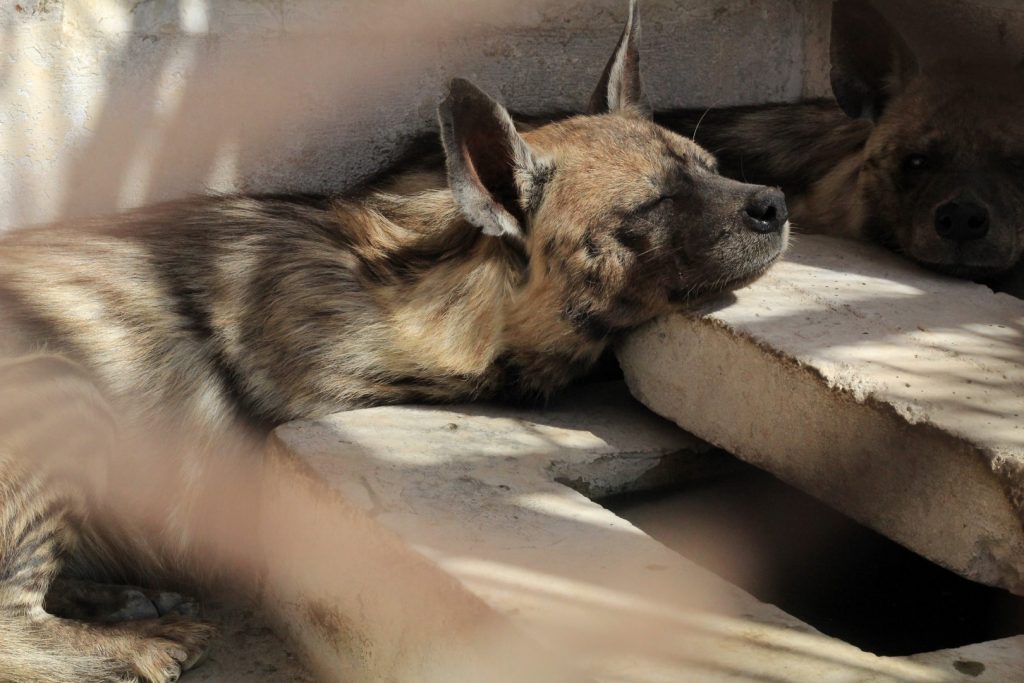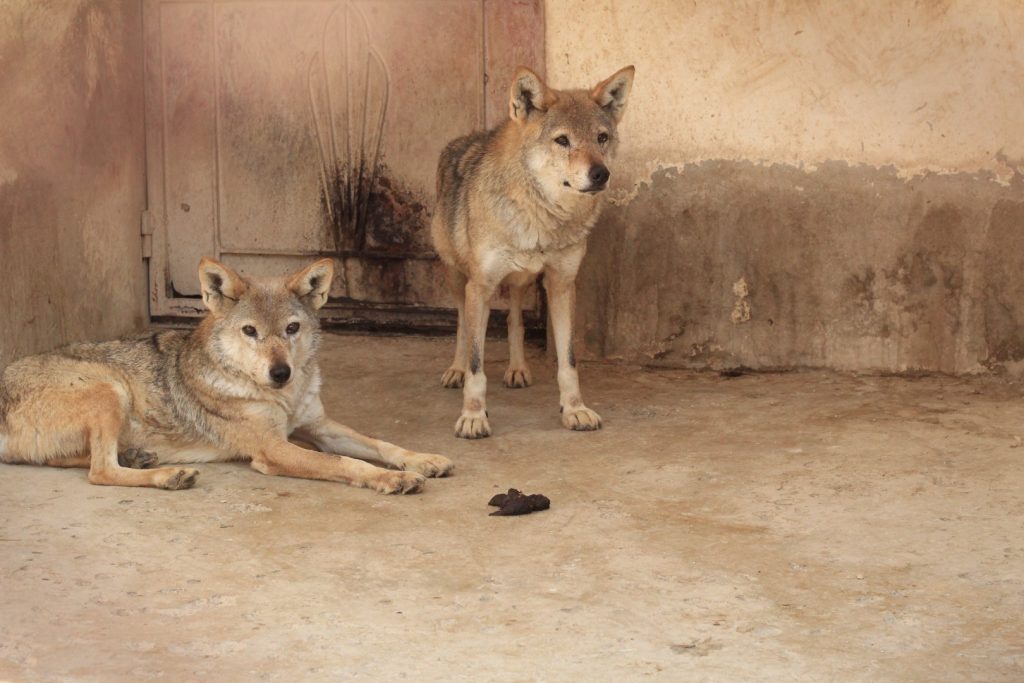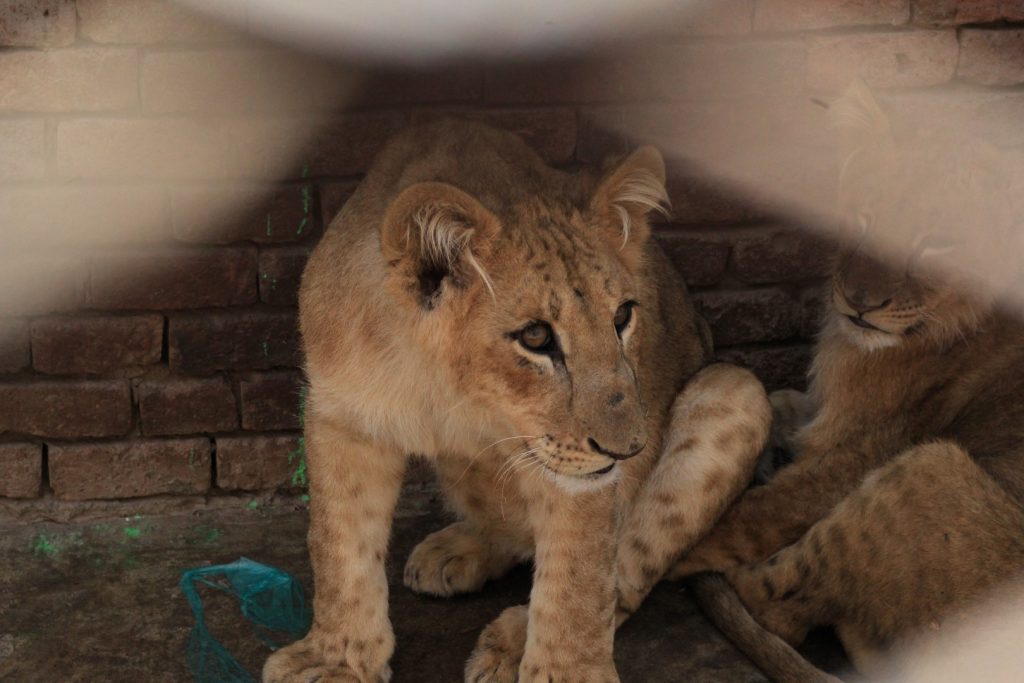Introduction of the Zoo The secretariat of the capital, Sanaa
It is the only zoo in the capital city of Yemen located in Dar Slam and it has an area of 57,000 square meters, visited by hundreds of thousands of citizens annually from various governorates of the Republic of Yemen for the purpose of watching animals closely and enjoying the view and providing sufficient information about them in terms of their behavior, food, places of existence and other information that a visitor needs to teach his children and his family. The zoo contains several predators, crawlers, pets, prey, poultry, etc. It also contains rare animals such as tigers and other important animals, and the garden is an environmental wealth for our country and a national duty to preserve and support it by all means and capabilities and it requires everyone to stand with the park administration and veterinarians to provide services to the park And to address its problems where the park administration desperately needs sufficient support to advance the park as required with a modern scientific vision keeping pace with technology and modernity, and we in the park and veterinary unit suffer from several problems and requests that the garden needs despite our repeated requirements, but to no avail, and we summarize them in the following points: –
1- Lions wing / Protection fence to prevent any injuries to visitors and children.
2- Monkey wing / the large increase in the number of monkeys, which has become a threat for workers, leaving the pavilion and attacking visitors and their children, which causes continuous accidents, the pavilion needs maintenance and roofing according to the study previously prepared by the park administration and the technical department for the maintenance and repair of four pavilions.
3- Bird roof / It needs to make a roof of transparent fiber to prevent the entry of rain water that causes the death of birds, poppies and other animals.
4- Beauty wing / it needs separators in the yards to isolate newborns and do general maintenance for the wing.
5 – The slaughterhouse / it needs maintenance of sewers and plumbing for donkeys, with its entire roof.
6 – Reptiles and crocodile wing / not completing the project in this wing, and no temporary or permanent treatments were made according to an environmental vision that fits the nature of the animal according to the opinions of the veterinary specialists.
7 – Establishing a central refrigerator to store meat and animal food, and to preserve dead animals until they are dissected and mummified.
8 – Creating new Maui for tigers, leopards, hyenas and deer with modern specifications equipped with all the services of heating and commensurate with the animal’s environment for adapting to them and ease of propagation.
9 – Providing an additional modern anesthesia gun with adequate accessories.
10 – Providing modern veterinary tools, supplies and devices.
11 – Providing tools, hygiene and sterilization supplies.
12 – Providing excellent quality sleeves for animal breeders and specialists.
13 – Making bulletproof glass panels for monkey wing, bird roof, etc., and removing all distortions of iron that blocks the vision.
14 – Creating a lake fish tank.
15 – Providing ten garden workers to cover the tasks assigned to the park management.
15 – Maintaining the surface of the ostrich shelter.
16 – Supplying gneiss (Helsin) to ostrich and turtle maws for reproduction and egg laying.
17 – Maintaining Maui predators in terms of welding, flanging, drainage, cloud doors, etc.
18 – Creating introductory animal portraits and guiding sites for pavilions and garden facilities.
19 – Making leaflets (flyers) to promote and familiarize with the animals, their behaviors, whereabouts and zoo facilities and pets.
20 – Supplying the garden with new animals, such as giraffes, zebras, elephants, the African tiger, and others, with their Maui and new food.
21 – Creating a showroom with educational accessories for children and school trips.
22 – Providing modern slugs for transporting animals.
23 – Providing wooden houses for pigeons, birds, parrots, and others of varying sizes, depending on the size of the bird.
24 – Creating a central heating system for important animals to avoid their death because of the freezing cold in the winter.
25 – Maintaining the veterinary quarantine and additional attachment for animal isolation.
26 – Providing sophisticated water and food strips used in private chicken farms.
27 – Providing a desktop computer with its accessories, two and one portable, to work in writing down daily information about animals, storing them and other works.
28 – Adopting additional feeding for newborns or animals entering, according to the study previously prepared for each animal’s need for daily food.
29 – Providing safety tools for , snakes, hyenas and other modern and advanced tools.
30 – Adopting a monthly payment for the purchase of veterinary medicine.
31 – Making periodic vaccines for workers and animals to prevent the transmission of any dangerous diseases that are common between humans and animals.
32 – Providing the garden with an advanced integrated camera system to monitor animals, especially as they contain important animals.
33 – Providing ten water tanks with a capacity of 1,000 liters for Maoists.
34 – Making fountains and waterfalls in the garden.
35 – Carrying out the study prepared by the Social Fund for Development by constructing four rainwater harvesting tanks in the garden.
36 – Creating an integrated irrigation network in the garden, planting additional green spaces, and setting up protective walls in some sites.
37 – Developing an advanced radio information network covering the garden.
38 – Maintaining the garden pump.
39 – Maintaining the water network and pipes branched from the upper tank.
39 – Installing rubbish bins.
40 – Building concrete paddles with seating chairs.
41 – Implementing an additional upper tank.
42 – Providing manual tiller separator









